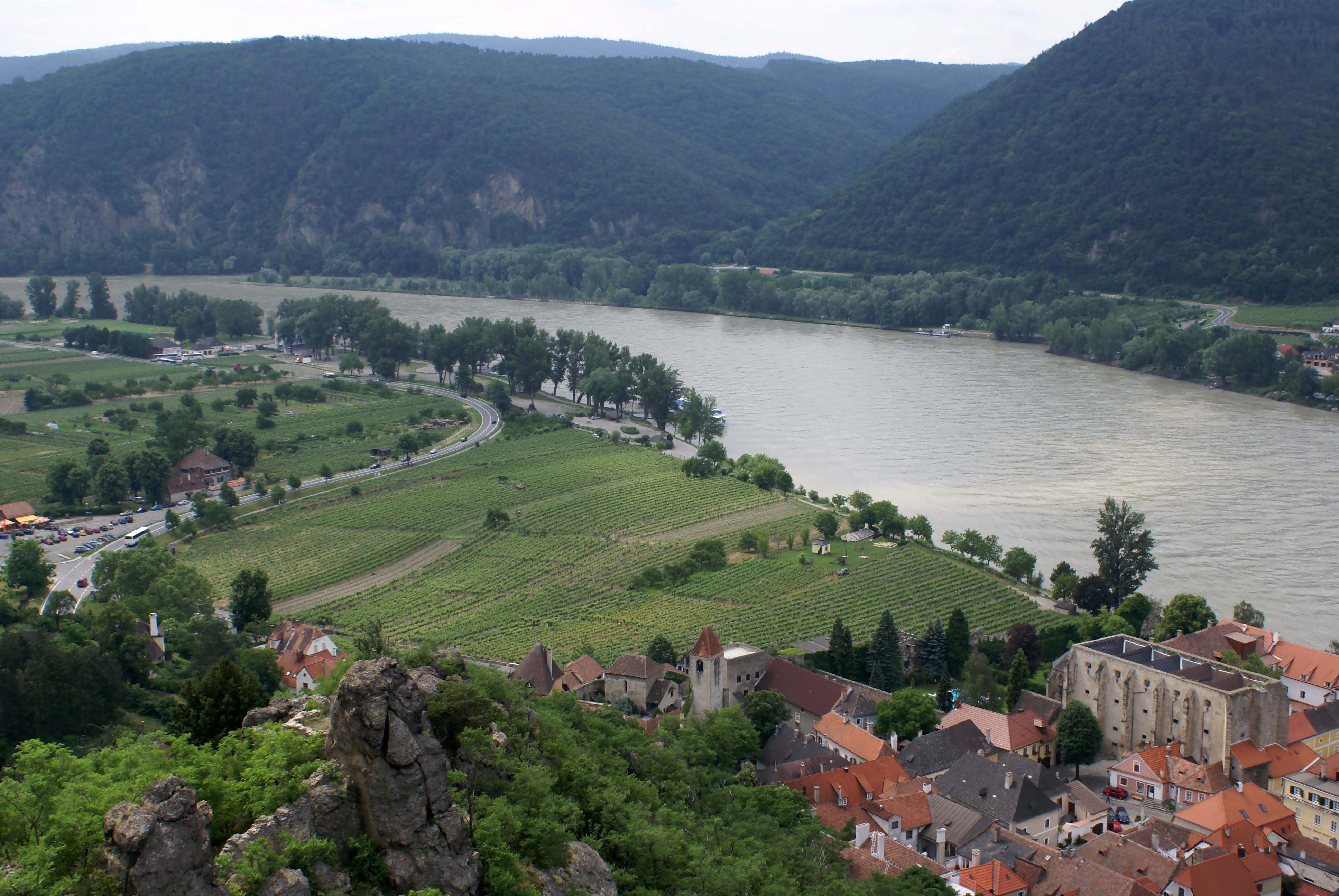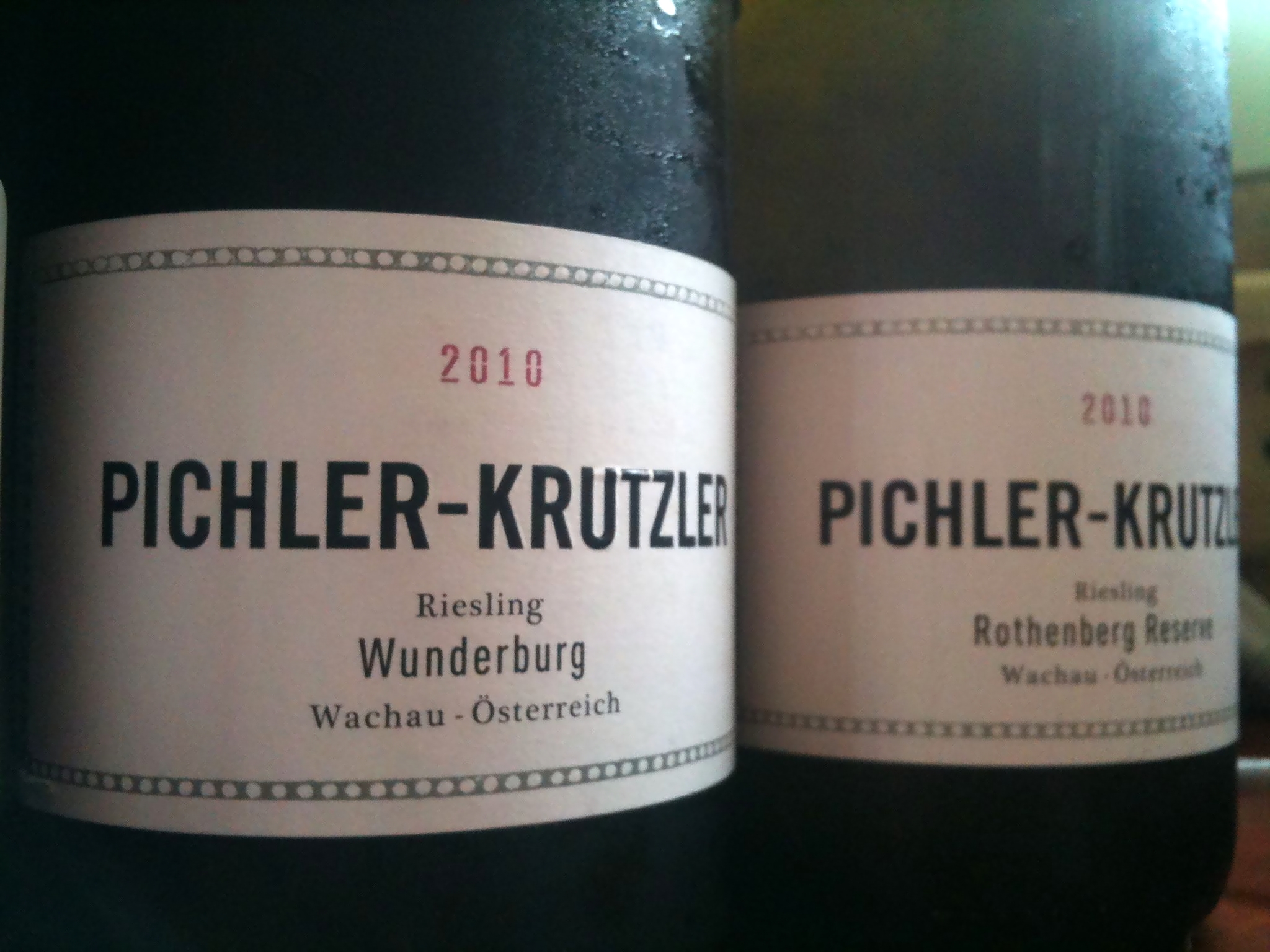Pichler-Krutzler: high fly
Posted on 17 October 2011
I was wildly excited at getting a case of newly bottled wines from Weingut Pichler-Krutzler. This young estate has only made its first vintage in 2007 but is now firmly among the stars of winemaking Austria.
It isn’t surprising, after all, given that Elisabeth Pichler is the descendant of the world-famous F. X. Pichler family and Erich Krutzler has made top-class red Blaufränkisch in the Burgenland, including the famous Perwolff. (Erich has also been the winemaker of exciting projects in Slovenia such as Dveri-Pax and Marof).
Ever since their grassroots start (from leased vineyards) Elisabeth and Erich have been going from strength to strength, but the 2010 vintage (by no means an easy one in Wachau, producing very tight, lean wines with super-high acidity) surpasses everything I’ve tasted here. Simply put, these are brilliant, world-class Rieslings and Gruner Veltliners with fantastic personality.
In cool acidic years Veltliner often performs better than Riesling and so the 2010 Supperin was a tremendous start to the tasting. From a low-lying flat vineyard usually dedicated to forgettable Federspiel-style wines, I never expected so much intensity and depth here. The Wunderburg Veltliner packs in considerably more concentration, one of Pichler-Krutzler’s hallmarks where low yields and old vines contribute to wines with impressive extract that is more like red than white wine.
But the Rieslings are even more impressive. The Loibenberg is a cru where Elisabeth’s father and brother have produced one of Austria’s most sought-after wines. Elisabeth’s style is less Baroque and exuberant, uncovering surprising layers of cool minerality from this warm loess soil site. The 2010 Wunderburg Riesling is tighter and pithier. The Rothenberg Reserve is a richer, more Germanic style of Riesling with some 20g sugar (at 13% alc.) that works very well: never really to sweet, it is as mineral as the other wines here in a more aromatic style.
Style is an important keyword here. These modern-yet-traditional wines turn their back to the big overripe, portentous style that made Wachau internationally famous in the past decade (and one whose major exponents was, incidentally, F. X. Pichler). Phenolic richness is replaced by transparent minerality, but these aren’t lean, fruitless wines: on the contrary, their intensity and concentration are staggering, and they have tremendous length on the palate.
As an interesting aside, Erich Krutzler also produces a red Blaufränkisch sourced from Weinberg in the Burgenland. I liked this wine at it first release but have to say it has improved tremendously in the bottle. The 2007 is a mighty fine example of Blaufränkisch, this quirky elusive grape that can be surprisingly Pinot Noir-like at its best. The style is again a rethinking of how Blaufränkisch has been made in the last decade. Erich Krutzler is careful about any excess of oak, and the freshness and mineral poise of this wine are very enticing. I’ve also tasted the slightly simpler 2008 and a very promising 2009 (but give it five years). With Moric and Dorli Muhr this is one of the very interesting Austrian reds.
Disclosure
Source of wine: case of tasting samples received from the winery.




